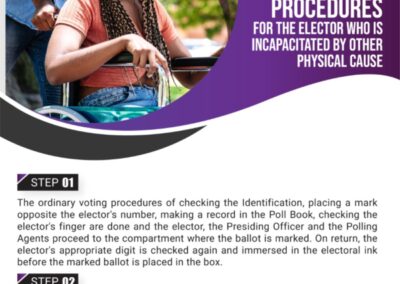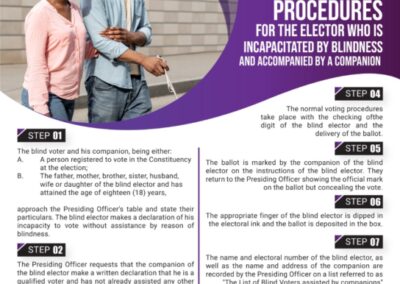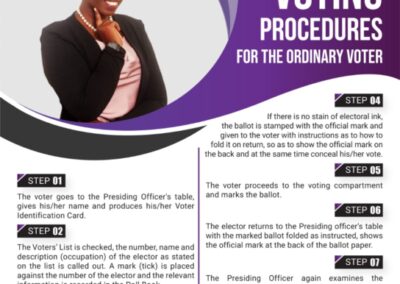The Antigua and Barbuda Electoral Commission has released a list of rules and procedures that voters in Antigua and Barbuda must follow in order for them to cast their votes on January 18th, seven days from now
Polling Stations will open at 6 am and close at 6 pm on Election Day.
Employers are mandated by law to give employees a four-hour window to vote.
Here’s what you need to do in order to cast your vote:
- In order to vote in the election, you must be registered to vote. That means, if your name is not on the electoral list you would not be allowed to vote.
- All prospective voters must have a valid electoral ID.
Voting procedures for ordinary voters:
- The voter goes to the Presiding Officer’s table, gives his/her name and produces his/her Voter Identification Card.
- The Voters’ List is checked, the number, name and description (occupation) of the elector as stated on the list is called out. A mark (tick) is placed against the number of the elector and the relevant information is recorded in the Poll Book.
- The Presiding Officer checks the right index finger for stains of black electoral ink if it is missing; any finger that is situated nearest to the thumb or thumb socket if there is no thumb).
- If there is no stain of electoral ink, the ballot is stamped with the official mark and given to the voter with instructions as to how to fold it on return, so as to show the official mark on the back and at the same time conceal his/her vote.
- The voter proceeds to the voting compartment and marks the ballot.
- The elector returns to the Presiding officer’s table with the marked ballot folded as instructed, shows the official mark at the back of the ballot paper.
- The Presiding Officer again examines the appropriate digit to ensure that there is no substance on the finger to prevent the adhesion of the electoral ink. The elector’s appropriate digit is then dipped in the ink, after which the elector places the ballot in the ballot box and leaves the Polling Station.
Voting procedures for an elector, who is incapacitated by blindness and accompanied by a companion:
- The blind voter and his companion, being either:
(A). A person registered to vote in the Constituency at the election
(B). The father, mother, brother, sister, husband, wife or daughter of the blind elector and has attained the age of eighteen (18) years, approach the Presiding Officer’s table and state their particulars. The blind elector makes a declaration of his incapacity to vote without assistance by reason of blindness.
- The Presiding Officer requests that the companion of the blind elector make a written declaration that he is a qualified voter and has not already assisted any other blind person to vote at the election.
- If the Presiding Officer is satisfied, then the application is granted and FORM 8 is completed and retained by the Presiding Officer.
- The normal voting procedures take place with the checking of the digit of the blind elector and the delivery of the ballot.
- The ballot is marked by the companion of the blind elector on the instructions of the blind elector. They return to the Presiding Officer showing the official mark on the ballot but concealing the vote.
- The appropriate finger of the blind elector is dipped in the electoral ink and the ballot is deposited in the box
- The name and electoral number of the blind elector, as well as the name and address of the companion are recorded by the Presiding Officer on a list referred to as “The List of Blind Voters assisted by companions”. The law provides for the ballot paper of a blind elector, who is not accompanied by a companion or any elector who suffers from other physical cause, to be marked by the Presiding Officer, on the instructions of the voter, in the presence the Polling Agents.
Voting procedures for the elector who is incapacitated by other physical cause:
- The ordinary voting procedures of checking the Identification, placing a mark opposite the elector’s number, making a record in the Poll Book, checking the elector’s finger are done and the elector, the Presiding Officer and the Polling Agents proceed to the compartment where the ballot is marked. On return, the elector’s appropriate digit is checked again and immersed in the electoral ink before the marked ballot is placed in the box.
- The Presiding officer records on a list the name and electoral number of the voter whose vote is marked in this manner. The list is referred to as “The List of Votes marked by the Presiding Officer”.
Information provided by the Antigua and Barbuda Electoral Commission.









0 Comments